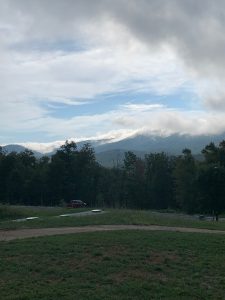Books, fantasy
Romantasy vs. Fantasy
The book draft I recently finished is something I’m hoping will fit the current trend for “romantasy,” or romantic fantasy, but I’m still not really sure what they’re looking for there. Earlier in the year, I saw an online panel of editors working on romantasy and asked just what they’re looking for in the romance part of it — can it be just vibes and the sense that the couple will get together (maybe later in a series) or is it a full-on romance novel that happens to be set in a fantasy world? One of the editors, who’s heading an actual “romantasy” imprint and who came from the romance side of things, said she want’s a full-on romance, while another editor said she was fine with just vibes.
If it’s supposed to be a romance, then that generally means a Happily Ever After (they’re definitely together as a couple at the end of the book and have made some kind of commitment), the main conflict in the story is between the couple, and if you remove the romance, the story doesn’t work. That’s different from a fantasy with romance in it, in which the romance happens along the way as all the plot stuff happens. The couple may or may not be together at the end. If it’s a series, it may take multiple books for them to definitely be together. There may not even be a conflict between the members of the couple. They may get along pretty well and just have a development from strangers to colleagues to friends to lovers, and the main thing keeping them apart is the plot situation — it’s hard to have a happily ever after when there’s still that dark wizard to vanquish. If you removed the romance you’d still have a story. It’s an accent to the story rather than the core.
Well, when I read a book from the designated romantasy imprint, I found that it actually wasn’t as romancey as the editor made it sound. There was a complete romance with a happy ending in the story, but you could have removed the romance and still had a story that worked. There was some conflict between the hero and heroine, but most of it was one-sided, with the hero unknowingly pushing the heroine’s buttons and getting on her nerves until she realized she needed to handle things differently.
I’ve actually seen things that come closer to being “romance” that were published before the current romantasy trend. I just finished reading that Twelve Houses series by Sharon Shinn, and I think you could remove the romances from the first couple of books and still have a story, though the romances upped the stakes and were pivotal for the character arcs. In the second two books, the romance was more pivotal. Most of the plots wouldn’t have happened if the romances hadn’t been there because they had a lot to do with the characters doing the things that were critical for the plots.
As a reader, I find that I don’t engage as much with a fantasy book that doesn’t have any love story in it. I like figuring out who’s going to get together and if they will, and I like it if a lot of the character growth comes through the relationship — where they make each other better people. But I don’t really like a full-on romance that focuses on the relationship. I like the relationship to happen along the way as other stuff happens.
I’m still not sure if that book I’ve been working on fits. It doesn’t really have a strong romantic happy ending. It mostly ends with them having an awareness that there are feelings there, and that will develop in the next book. And yet, there wouldn’t be much of a story if you removed the romantic elements because romance has a lot to do with the characters’ motivations at each of the major turning points. It has much more romance than the first Enchanted, Inc. book, which a lot of readers (and editors) saw as very romantic.
I guess all I can do is write it as well as I can and see what happens. If publishers don’t want it, I’ll just independently publish it and let readers decide.

